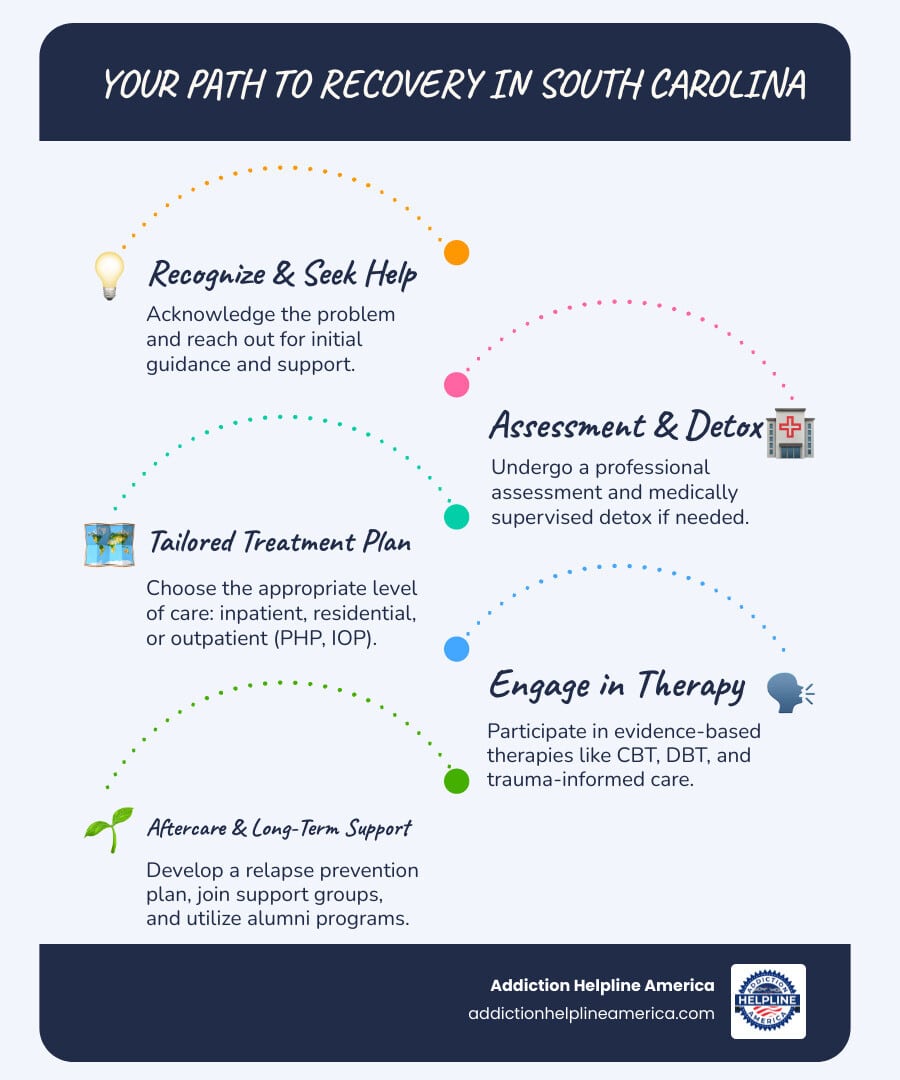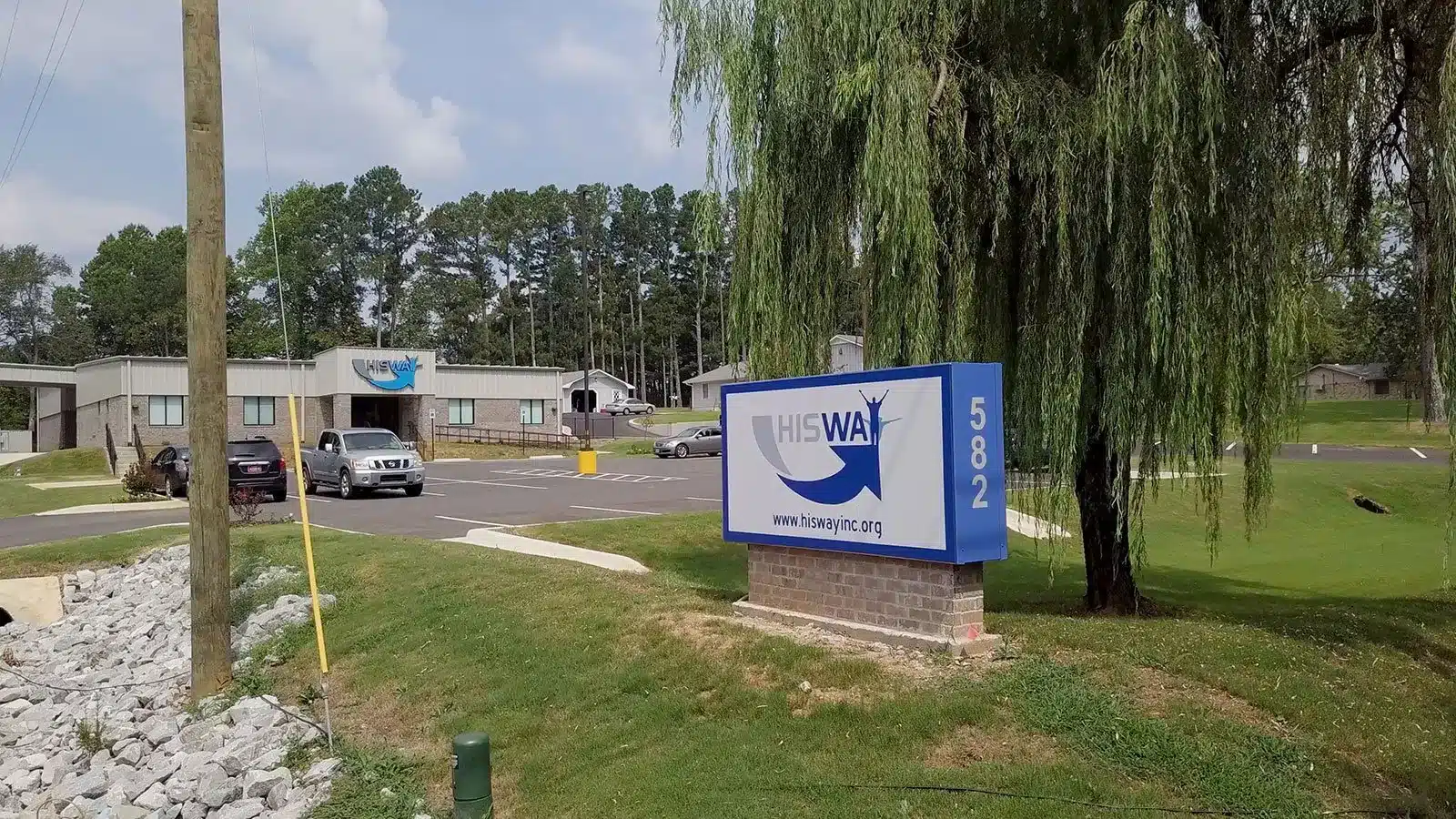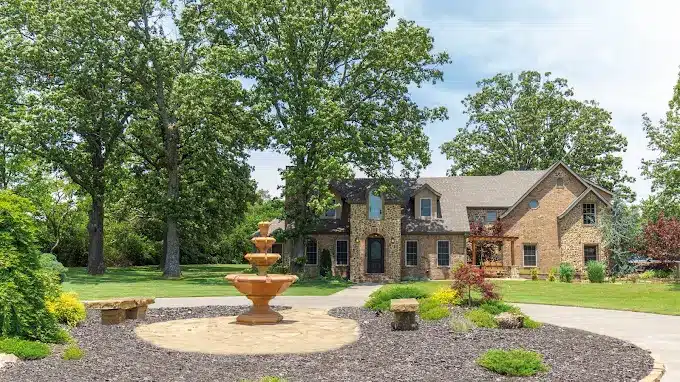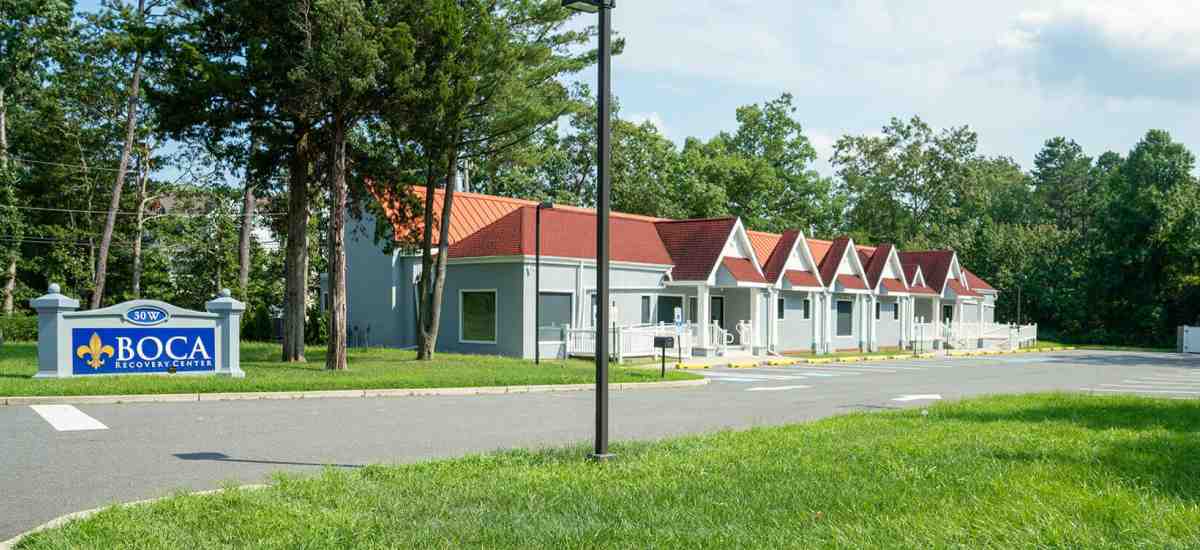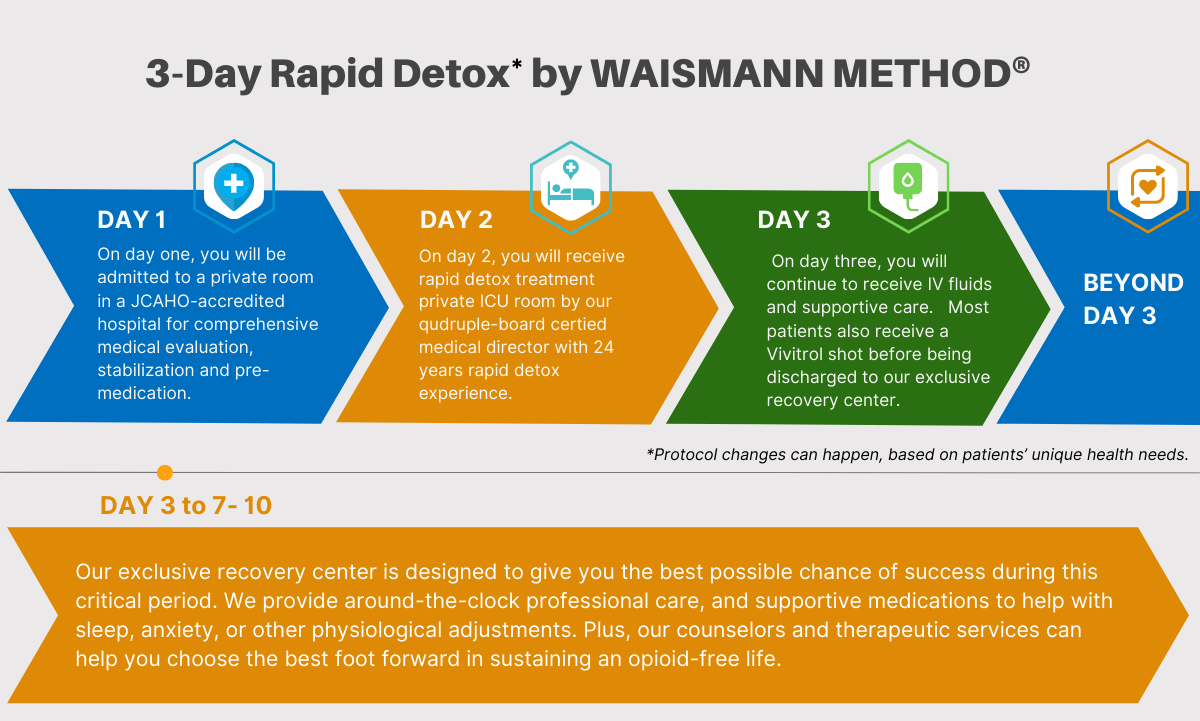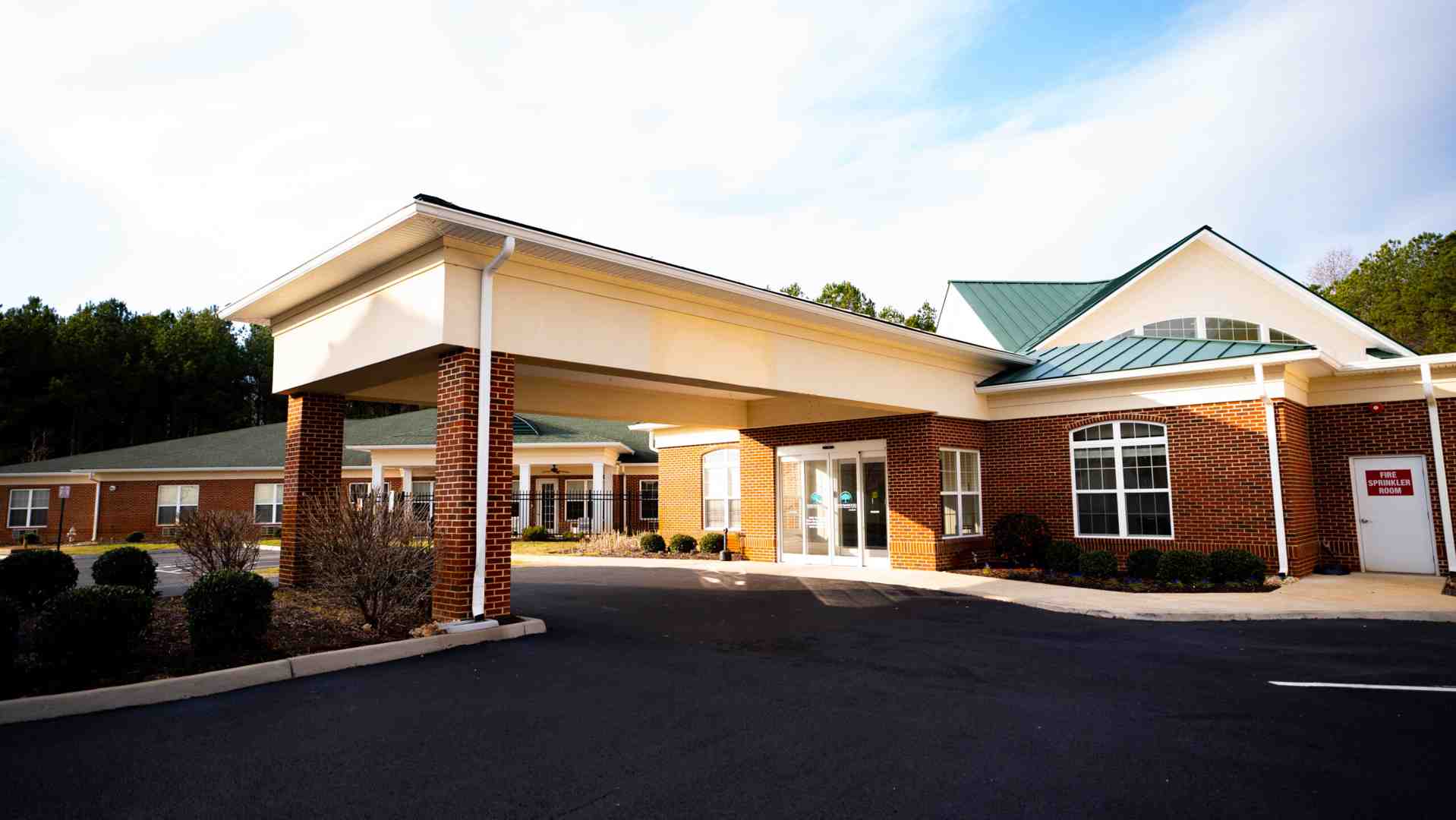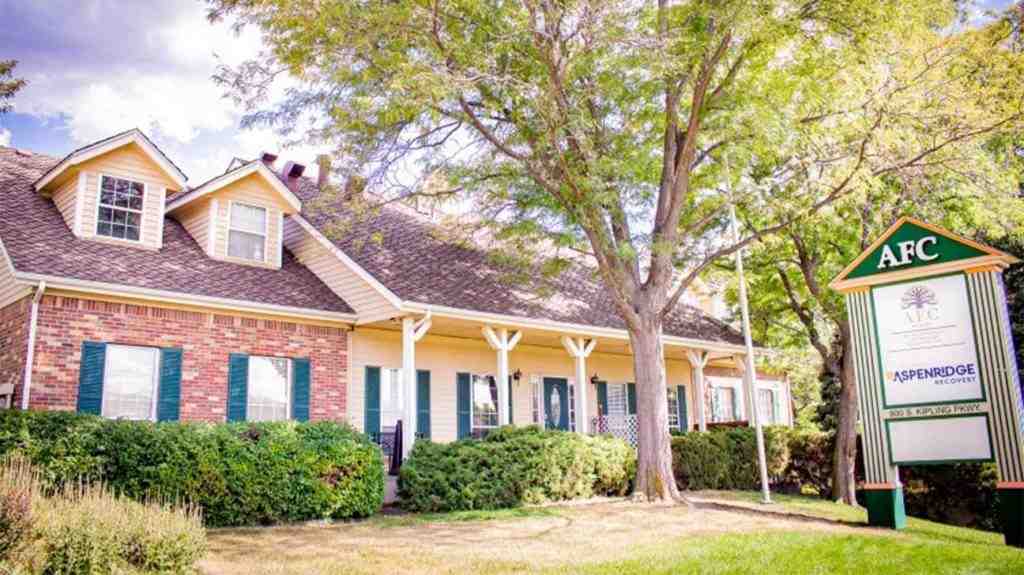
Why Finding the Right Rehab Facility Is Critical to Recovery Success
Learning how to find the right rehab facility is a critical step on the journey to recovery, as the right choice can mean the difference between lasting sobriety and continued struggle. The process can feel overwhelming, but it boils down to finding a center that addresses your specific needs, accepts your insurance, and offers the appropriate level of care.
5 Essential Steps to Finding the Right Rehab:
- Assess Your Needs – Determine addiction severity, substance type, and any co-occurring mental health conditions.
- Explore Your Options – Compare inpatient, outpatient, detox, and specialized programs.
- Verify Credentials – Check for accreditation (CARF, Joint Commission), state licensing, and qualified staff.
- Ask Critical Questions – Inquire about treatment methods, success rates, aftercare, and insurance.
- Make an Informed Choice – Weigh cost, location, and treatment philosophy against your recovery goals.
Research shows that treatment should begin as soon as a person is stable, often starting with medically-supervised detox followed by intensive therapy. Thankfully, many options exist, from immersive inpatient programs to flexible outpatient care, including centers specializing in dual diagnosis, faith-based approaches, or gender-specific treatment.
At Addiction Helpline America, we help individuals and families steer this process by connecting them with treatment options that match their unique needs and insurance coverage. Our team provides personalized, confidential guidance 24/7.
This guide will walk you through each step, giving you the confidence to choose a facility that offers the best chance at lasting recovery.
Related content about how to find the right rehab facility:
Understanding Your Needs: The First Step to Recovery
Before researching facilities, the most important step in how to find the right rehab facility is understanding your own needs. Addiction affects everyone differently, so a personalized approach is key. Start by honestly assessing the addiction’s severity, the substances involved, and your personal circumstances, such as your living situation, work commitments, and support system. Clarifying your recovery goals—whether it’s complete abstinence, better mental health, or rebuilt relationships—will help you identify the right program. For more on this, our mental wellness support complete guide offers valuable insights.
Key factors in how to find the right rehab facility for your needs
A critical factor is identifying any co-occurring mental health conditions like depression, anxiety, or PTSD. This is known as a “dual diagnosis.” Since addiction and mental health issues often fuel each other, treating both simultaneously is essential for success. Not all centers offer integrated dual diagnosis treatment, so ask about this upfront. You can learn more about comprehensive care in our guide to treatment for depression and anxiety.
Other important considerations include:
- Physical Health: Do you have chronic medical conditions, disabilities, or dietary needs that require accommodation?
- Previous Treatment History: What worked or didn’t work in past rehab experiences? Use this information to find a better fit.
- Support System: Who can be part of your recovery? Family involvement can be powerful, as can supportive friends and community connections.
Inpatient vs. Outpatient: Which is right for you?
One of the biggest decisions is choosing between inpatient and outpatient treatment, which involves matching the intensity of care to your needs.
Inpatient (residential) rehab involves living at the facility for 30-90 days. This 24/7, structured environment is ideal for severe addiction, serious co-occurring disorders, an unstable home life, or if you need medical detox. It removes you from daily triggers, allowing you to focus completely on recovery. Our guide on Do I Need Inpatient Rehab? can help you decide.
Outpatient rehab allows you to live at home while attending treatment. It’s a good fit for moderate addiction, a stable home environment, and ongoing work or family duties. Levels of intensity vary from Partial Hospitalization (PHP) and Intensive Outpatient (IOP) to standard weekly sessions.
| Feature | Inpatient (Residential) Rehab | Outpatient Rehab |
|---|---|---|
| Intensity of Care | Highest: 24/7 supervision, highly structured environment | Varies: Partial Hospitalization (PHP), Intensive Outpatient (IOP), Standard Outpatient (OP) |
| Living Situation | Live at the facility, away from triggers and daily life stressors | Live at home, attend sessions at a treatment center for several hours a day or week |
| Ideal Candidate | Severe addiction, unstable home environment, co-occurring disorders, history of relapse, need for medical detox | Moderate addiction, stable home environment, strong support system, work/family responsibilities |
| Program Structure | Intensive therapy (individual, group, family), medical care, recreational activities, skill-building workshops | Regular therapy sessions (individual, group), educational workshops, relapse prevention strategies |
| Cost Comparison | Generally higher due to accommodation, meals, and 24/7 care | Generally lower, as living expenses are not included |
There is no “better” option, only what’s better for you. An honest self-assessment is the foundation for finding the right facility.
Exploring the Different Types of Rehab Facilities
Once you understand your needs, it’s time to explore the continuum of care available for addiction treatment. Different facilities offer varying levels of intensity and support, so matching the program to your situation is key to figuring out how to find the right rehab facility. Our treatment and recovery options guide provides a complete overview.
Medically-Supervised Detoxification
For many, recovery starts with detox. Medically-supervised detoxification safely manages withdrawal symptoms, which can be uncomfortable and even life-threatening, especially with alcohol or benzodiazepines. In a detox facility, medical professionals provide 24/7 care to keep you safe and comfortable. This stabilization period, typically lasting 5-10 days, prepares you for the deeper work of therapy. Not all rehabs offer detox, so be sure to ask. Our detox facility ultimate guide and alcohol withdrawal timeline offer more details.
Inpatient Rehabilitation Facilities (IRFs)
Inpatient rehabilitation facilities (or residential treatment) offer the most intensive level of care. You live at the facility for 30, 60, or 90 days, removed from daily triggers and stressors. These programs provide a highly structured environment with 24/7 supervision, daily individual and group therapy, medical oversight, and peer support. This immersive approach is ideal for those needing to build a strong foundation for recovery. Find local options with our drug rehab near me inpatient resource.
Outpatient Programs (OP, IOP, PHP)
Outpatient programs offer flexibility, allowing you to live at home and maintain daily responsibilities while receiving treatment. The main types include:
- Partial Hospitalization Programs (PHP): The most intensive outpatient option, with treatment for several hours a day, five days a week.
- Intensive Outpatient Programs (IOP): A step down from PHP, typically involving 9-12 hours of therapy per week. Our IOP program Costa Mesa guide shows an example.
- Standard Outpatient (OP): The most flexible option, with one or two therapy sessions per week, often used for aftercare.
Outpatient treatment requires a stable home environment and the self-discipline to attend sessions consistently.
Specialized and Long-Term Care
Beyond standard programs, many specialized options cater to specific needs. Sober living homes offer a substance-free transitional environment after rehab, providing structure and peer support. Other specialized programs include:
- Faith-based programs that integrate spiritual principles, like those in our Christian addiction rehab guide.
- Luxury rehab programs with high-end amenities for comfort and privacy. See our luxury rehab programs guide for more.
- Gender-specific and LGBTQ+ affirming programs.
- Programs for specific populations like veterans, first responders, or professionals.
Knowing these options exist helps you find a program that feels like the perfect fit.
How to Find the Right Rehab Facility: Key Evaluation Criteria
Once you know what type of program you need, it’s time to vet specific facilities to ensure they provide quality care. This is a critical part of how to find the right rehab facility. At Addiction Helpline America, we help you cut through the confusion and connect with reputable centers. Our list of top addiction centers is a great place to start.
Check for Licensing and Accreditation
Accreditation is proof that a facility meets high standards for safety and quality. Look for accreditation from CARF (Commission on the Accreditation of Rehabilitation Facilities) or The Joint Commission. You can verify CARF accreditation on their list of accredited rehabilitation facilities. Additionally, ensure the facility holds a current state license, which is a non-negotiable requirement for legal operation. Reputable centers will be transparent about their credentials.
Evaluate Staff Qualifications and Treatment Approaches
The quality of the staff is paramount. Ensure the clinical team—doctors, therapists, and counselors—is fully licensed and certified. A multidisciplinary team is ideal. The facility should use evidence-based therapies like Cognitive Behavioral Therapy (CBT) and Dialectical Behavior Therapy (DBT), which are scientifically proven to be effective. Many top centers also offer holistic approaches like yoga, meditation, and art therapy to support overall well-being. Our stimulant addiction treatment guide shows how these methods work together. Also, ask about the staff-to-patient ratio; a lower ratio means more personalized care.
Questions to ask when learning how to find the right rehab facility
Come prepared with questions to help you evaluate each center. You’re not being difficult; you’re being an informed consumer.
- Does the facility create customized treatment plans?
- What’s their experience with your specific situation (e.g., dual diagnosis)?
- How do they involve your family in the treatment process?
- What does the aftercare program entail for long-term support?
- What is their policy if a relapse occurs?
- How do they measure and track patient success rates?
- What does a typical day’s schedule look like?
- Is medical detox available on-site?
- What medical services are available for emergencies or other health needs?
- How do they accommodate special needs (dietary, physical, etc.)?
Understanding Cost and Insurance Coverage
Don’t let cost be an immediate barrier. If you have private insurance, your plan likely covers some or all of the treatment. Work with the facility’s admissions team to verify your benefits. Our guide on how to find rehab programs that accept insurance can help.
For those with limited resources, publicly funded programs are available, though they may have waiting lists. Our free drug rehab centers complete guide explains how to find them. Many facilities also offer payment plans or financing. Be direct when asking about total costs and payment options. We specialize in connecting people with programs that fit their financial situation.
Preparing for Rehab and Supporting Loved Ones
After selecting a facility, the next step in how to find the right rehab facility is preparing for admission. This involves handling logistics like time off work and childcare, as well as emotionally preparing for the transition. Family involvement is crucial, as loved ones also need support during this time. Our drug intervention services can guide you through having these difficult but necessary conversations.
Questions to Ask the Doctor Before Discharge
If transitioning from a hospital, speak with the discharging physician to ensure continuity of care. Key topics to discuss include:
- Patient’s Condition: The full diagnosis, including any co-occurring mental or physical health issues.
- Recommended Level of Care: Whether the doctor suggests inpatient, PHP, or IOP treatment.
- Ongoing Medical Needs: Any chronic conditions or post-detox care required.
- Medication Management: The current medication plan and how it will be managed in rehab.
- Ability to Participate: Any cognitive or physical limitations that might affect engagement in therapy.
The Role of Tele-Rehabilitation and Home-Based Programs
Tele-rehabilitation, or telehealth, offers flexible and accessible addiction treatment through virtual sessions and remote monitoring. It’s an excellent option for those in rural areas, with work or family commitments, or as a step-down for aftercare. While it provides convenience and comfort, it’s not suitable for everyone. Those with severe addiction, an unstable home life, or who need 24/7 medical supervision typically require in-person care. Home-based programs, which may include telehealth, bring therapy directly to a patient’s home.
Aftercare and Relapse Prevention
Completing rehab is the starting line, not the finish line. A strong aftercare plan is essential for long-term success and significantly reduces relapse rates. A comprehensive plan should be developed before leaving treatment and typically includes several components:
- Continuing Therapy: Ongoing individual or group sessions to reinforce skills.
- Alumni Programs: A built-in support network of peers from the same treatment center.
- Support Groups: Free, ongoing meetings like AA, NA, or SMART Recovery.
- Sober Living Homes: A structured, substance-free environment to transition back to daily life.
- Relapse Prevention Plan: A personalized strategy to identify triggers and manage high-risk situations.
Building a strong sober network of friends, family, and peers is the foundation of a lasting recovery.
Frequently Asked Questions about Finding a Rehab Facility
How long does a typical rehab program last?
The length of rehab varies based on individual needs. Medically-supervised detox usually lasts 5 to 10 days. Inpatient programs are commonly 30, 60, or 90 days, with longer stays recommended for more severe cases to improve long-term outcomes. Outpatient programs are flexible and can last from several weeks to many months, depending on the level of support needed. Long-term options like sober living can extend for a year or more.
What is the difference between a rehab center and a sober living home?
A rehab center is a licensed clinical facility providing intensive, structured treatment, including therapy and medical care, to address the root causes of addiction. A sober living home is a substance-free residence for people who have already completed a rehab program. It offers peer support and a structured environment to help residents transition back to independent life, but it does not provide formal clinical treatment.
Can I be forced to go to rehab?
In most cases, treatment is voluntary, as personal motivation is key to recovery. However, involuntary commitment is possible in some states under specific laws (like Florida’s Marchman Act) if a person is a danger to themselves or others due to substance use. This is a legal process that requires a court order and is typically considered a last resort. If you are considering this path, consult with a legal professional or contact us at Addiction Helpline America for guidance on your options, including drug intervention services.
Conclusion: Your Path to Recovery Starts Here
You’ve just steerd a comprehensive guide on how to find the right rehab facility – and that’s no small feat. If you’re reading this, you’ve already taken one of the bravest steps: seeking information to make an informed, thoughtful decision about treatment. Whether you’re searching for yourself or supporting a loved one, know that this choice matters deeply. The right facility can truly be the difference between lasting sobriety and continued struggle.
Throughout this guide, we’ve walked through the essential steps: assessing your unique needs, exploring the full spectrum of treatment options from detox to aftercare, verifying credentials and accreditation, asking the critical questions that reveal a facility’s quality, and understanding the financial realities of treatment. We’ve covered inpatient versus outpatient care, specialized programs, tele-rehabilitation, and the vital importance of aftercare and relapse prevention.
Recovery is not a straight line. There will be challenging days, moments of doubt, and times when the path feels unclear. But with the right support, hope and healing are always within reach. Thousands of people have walked this road before you, and thousands more will find their way to recovery with compassionate, evidence-based care.
At Addiction Helpline America, we understand that choosing a treatment center can feel overwhelming, especially when you’re already dealing with the weight of addiction. That’s exactly why we exist – to cut through the confusion and connect you with treatment options that truly match your circumstances, insurance coverage, and recovery goals. Our experienced team provides free, confidential, and personalized guidance 24/7, drawing from our vast network of reputable treatment centers across the nation.
You don’t have to figure this out alone. We’re here to answer your questions, verify insurance benefits, and help you find a facility where you or your loved one can begin the journey toward a healthier, substance-free life.
Your path to recovery starts right now, in this very moment. Reach out today.
For immediate assistance and to speak with a compassionate team member, please use our Addiction and Rehab Hotlines.
Our helpline is 100%
free & confidential
If you or someone you care about is struggling with drug or alcohol addiction, we can help you explore your recovery options. Don’t face this challenge alone—seek support from us.
Programs
Resources
Will my insurance
cover addiction
treatment?
We're ready to help
Find the best
drug or alcohol treatment
center
Are you or a loved one struggling with addiction? Call today to speak to a treatment expert.






